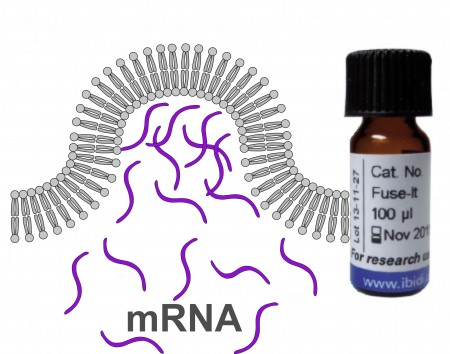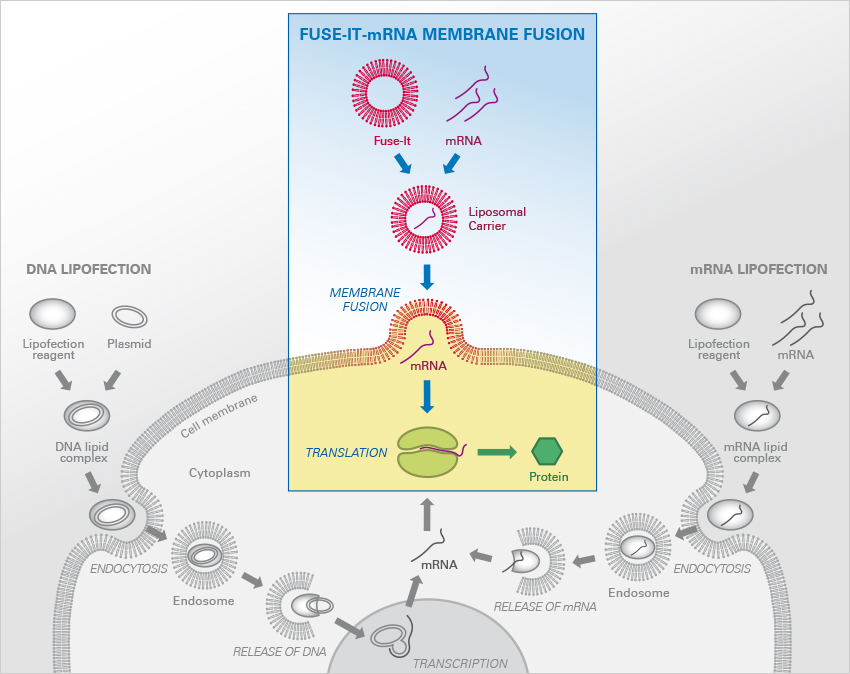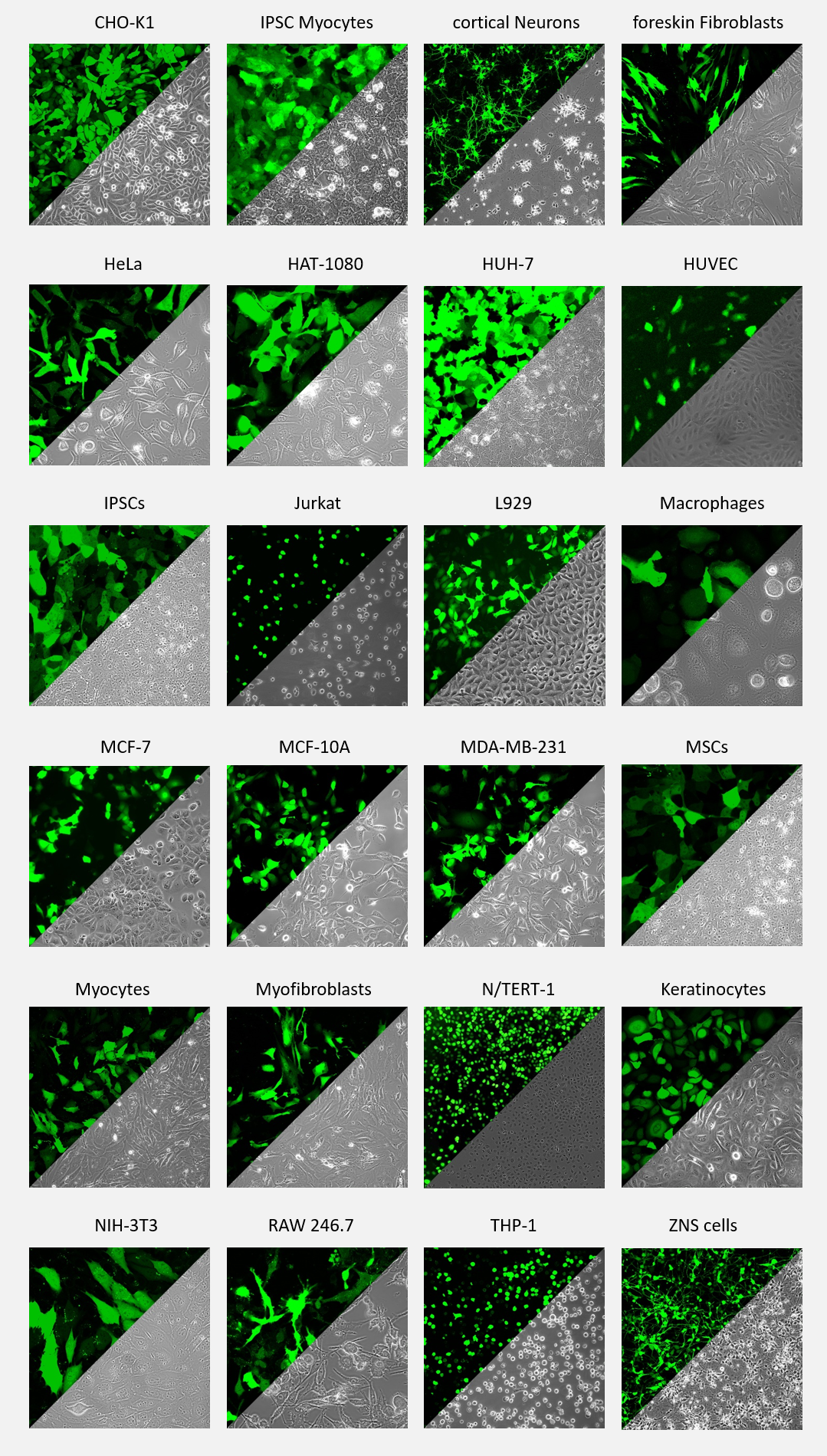A fusion reagent for rapid mRNA transfection into the cytoplasm of living cells
Technical Features
- Immediate mRNA translation leads to protein synthesis detectable after only 15-30 minutes
- Beniag’s fusion mechanism works perfectly in proliferating cells as well as in non-proliferating cells (e.g. cardiomyocytes)
- Highly efficient and biocompatible, especially in primary cells (e.g., neurons or HUVECs) and stem cells
Applications
- mRNA translation and degradation studies
- Protein biochemistry studies: synthesis, folding, processing, stability, localization, degradation
- mRNA transfer into primary cells without generating genetically modified organisms (GMO)
- Genome engineering by RNA-only CRISPR/Cas technology
Technical Features
- Lipofection-independent transfer of mRNA into living cells
- the transfer of mRNA is completed within 5–20 minutes
- No endocytosis involved
- No lysosomal degradation needed
- without transfer to the nucleus
- Protocol optimized for the transfer of functionally capped and polyadenylated mRNA
- No Biosafety Laboratory Level 1 or 2 necessary
- Excellent biocompatibility with low cytotoxicity
Membrane Fusion – The Direct Way to Protein Expression


